Below osteoarthritis refers to a degenerative process in the intervertebral discs. The spine on top of the compressed, crushing the discs, which are between the vertebrae. Over time they lose their elasticity, and begin now and cramped the nerve endings of the spinal cord.
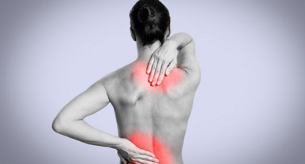
Like any other disease, low back pain should be treated under medical supervision. Next, we explain in detail what this disease is, why it liver to symptoms and what are the characteristic of him.
What is osteochondrosis?
Osteochondrosis is a disease of the spine, a characteristic feature, which is a degenerative-dystrophic lesion of the intervertebral discs, very well and then the tissue of the vertebrae.
Degenerative disc leads to a weakening of the outer fibrous ring. Therefore, patients with degenerative disc disease often, such a serious complications, such as a protrusion (a part of the bulging disc) and hernia (crossing the nucleus pulposus of the disc into the spinal canal).
According to the results of medical studies, problems with the spine suffers every second man after 30 years. 70% of cases the cause of pain in the spine degenerative disc disease, which refers to neurological diseases that affect the ligaments of the spine.
Like any other disease, lower back pain can arise spontaneously, without reason, hitting the back of the sharp pain. The first signs of osteochondrosis of the spine do not occur immediately, gradually.
Depending on the places of pain there are three types of osteoarthritis:
- Of the cervix;
- Chest;
- In the lumbar spine.
Important! The main complications include protrusion of the intervertebral discs osteochondrosis, schmorlin is a nodule, ankylosis of the spine, squeeze and the roots of the spinal nerves of the vessels.
Reasons
According to many experts who study this disease, the main cause of osteoarthritis is the wrong distribution of the load on the spine. As a result, patients directly in the field, which is extra physical pressure, there is a change in the structure of cartilage.
The causes of osteochondrosis:
- Genetic predisposition to the disease.
- English diseases of endocrine – metabolic disorders.
- The development of orthopedic diseases such as flat feet, curvature of posture, musculoskeletal diseases.
- A variety of injuries, injuries of the spine.
- Lifestyle: lack of exercise, poor diet, with the majority of fast-food food and harmful products.
- English being overweight.
- Bad habits – Smoking, alcoholism.
- Stress, protoplast.
- Pregnancy.
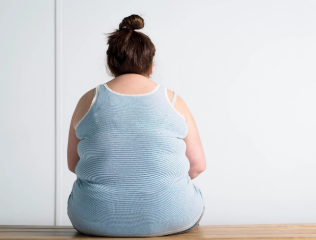
In most cases, the cause of osteochondrosis-related professional activities. The risk group includes the following professional groups:
- accountant;
- cashiers;
- IT workers.
- the office staff;
- professional athletes;
- the drivers of vehicles.
However, the fundamental role of the environment, that more signs of osteoarthritis often occurs as women to men.
The development stage
The development of degenerative disc disease of the liver have been 4 stages (e):
Low back pain, phase 1
It is characterized by early pathological process polipozom core of the intervertebral disc is dehydrated (dehydration), and therefore the height of the plate decreases. Thus, the fiber-ring began to show cracks. At this stage the patient usually does not feel any changes. The discomfort can manifest in unusual, that a person's seat, or active, free of charge.
Step 2
In the second stage of osteochondrosis of the continued degenerative changes lead to protrusion of the discs. To reduce the vertebrae of the gap, is the destruction of the fibrous capsule. As a result, violated the spinal nerve roots that provokes the appearance of the point of pain, the intensity of which increases with tilt, swivel, and other movements. Perhaps the appearance of weakness, decreased performance.

Step 3 degenerative disc disease of the spine
Is characterized by to remove the cartilage cushions between the discs, thinning of the tissue is very noticeable, if you want to make renthenznimky. Symptoms of osteochondrosis pronounced, are intense, and the pain does not pass, and shoot is capable of in vain it is a powerful painkillers.
Step 4
The fourth stage is a complex neurological disorder of the spinal system, which is expressed in a complete or partial limitation of mobility of the joints. In this diagnostic mode, place the spine the joints formed bony growths (osteophytes), which causes micro trauma to the nerve branches and the adjacent spine segment.
In most cases, osteochondrosis 4 ° symptoms does not cause pain discomfort and when the joints become fossilized form.
Symptoms of osteoarthritis in adults
Osteochondrosis – a degenerative-dystrophic changes (destruction) and bone tissues of the spine, articular cartilage, ligaments and intervertebral discs. Over the disease has become abnormal mobility of the spine, which broke the soft tissue, nerve fibers blood vessels and is located near a lesion – the cause of the pain.
The main symptoms of osteochondrosis:
- back pain, cervical, lower back, shoulders and even the ribs;
- discomfort, stiffness of the back in certain movements, lifting something;
- numbness of the limbs (hands and/or feet);
- feeling and pain in the arms in legs, chills;
- muscle spasms;
- disorders of the genital tract;
- headache, dizziness;
- pain in the region of the heart;
- the loss of sensitivity
- muscle hypotonia;
- fatigue and sometimes the eyes.
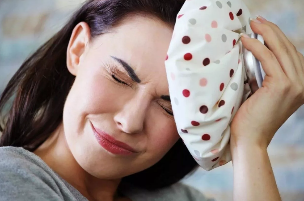
To facilitate the acute symptoms, may excessive exercise, fatigue, hypothermia, trauma, the body and the vibration of the oscillation.
Complications
Degenerative processes that affect the was first published of the intervertebral discs, reducing their density, the loss of their shock-absorbing functions. As a result of these changes is excessive movement of the spine affect the joints, muscles and tendons.
Involved in the destructive processes in the paravertebral structures causing the compression (squeezing) of the spinal cord, its nerve endings. As a result, patients with osteoarthritis feel pain, which is accompanied by such symptoms and diseases:
- severe headache, migraine;
- decrease in visual acuity.
- partial hearing loss;
- radiculopathy (sciatica);
- autonomic dysfunction (VSD);
- disorders of the urogenital system;
- sciatica (compressions of sciatic nerve);
- disc herniation;
- spondiloarthrosis;
- lumbago, lumbalgia;
- osteophytes, spondylosis;
- spinal stenosis.
The worst, degenerative disc disease is began to appear and other diseases. That damaged the neurovascular bundle, deteriorating blood circulation, as a result, the disease of the whole organism.
Aggravation of degenerative disc disease
Spring often comes an exacerbation of the base of the spine, in the winter of acute chest. Aggravation can be when the weather changes, stress, physical exertion. During exacerbation of the disease, has been prescribed painkillers, local ointments, medications that relieve swelling and muscle spasm. Diuretic used in severe edema, but at the same time it is necessary to apply the preparations, and potassium sodium.
Diagnosis
The diagnosis of osteoarthritis is based on the following methods:
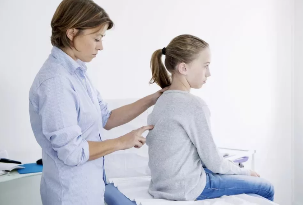
- The history of research on the basis of the patient's complaints, the occurrence and identify the time, reason, duration, characteristics of the disease.
- Physiological research:
- diagnosis of body posture, gait, range of motion of the patient;
- studied the skin to detect areas of redness, peeling, skin rash;
- palpable painful areas to determine the local temperature, English, swelling, muscle spasm, seals;
- the detection of the site of pain radiation is of particular percussion with the finger or a hammer;
- pricking with a needle to help determine pain sensitivity.
The instrumental diagnosis of osteoarthritis:
- X-ray diagnostics is a key role in this disease. Conventional radiography allows to identify such signs of the disease, such as narrowing the gap between the vertebrae.
- Magnetic resonance imaging (MRI) method allows for accurate diagnosis of research about what the pay spine processes. With his help, in particular, it is possible to determine English grimesta your disk and its localization.
- Computed tomography (CT) are similar in their diagnostic properties of MRI. Disadvantage of CT English radiation during the study.
How to treat osteochondrosis?
There is no specific method and only correct for the treatment of degenerative disc disease – this requires a process, under any circumstances, a holistic approach. If the doctor says otherwise, the man should think about his professional qualifications and the second to consider finding an expert.
Comprehensive traditionally, the program includes the following components:
- physiotherapeutic methods of influence;
- special exercises and massage;
- methods of manual therapy;
- medication;
- zone therapy, electrophoresis, etc.;
- grip.
Recommendations for the treatment of degenerative disc disease at home:
- The rejection of the ways and bad gradual transition to the acquisition of useful ways. Smoking, alcohol leads to convulsions and spot the trap vessels, dorsal artery.
- Diet — a rejection of the fat-cholesterol-containing and foods: eggs, broth, skins, birds and pigs.
- Limit your intake of strong coffee and tea, gradually switch to herbal teas and fresh juices.
- Choose the right mattress and pillow to sleep, preferably orthopedic.
- Normalization of blood circulation satis your muscles massage and plates, self-massage, complex physical therapy, pack, intake of herbal teas rubbing and and alcoholic tinctures of herbs.
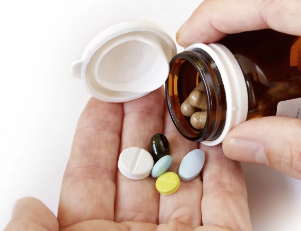
Medications for osteoarthritis
Experts in the treatment of such patients, prescribe medication, which has the following features: relieve inflammation, restore the function of the musculoskeletal system, stimulates the regeneration of tissues of the intervertebral discs cartilage and and and prevent the progression of osteoarthritis.
Treatment of osteoarthritis is traditional ways of treatment of diseases of the many of the musculoskeletal system: prescribed Nsaids to remove the inflammatory process in the tissues, chondroprotectors level and restore the synovial fluid of corticosteroids, if the first two drugs have proved ineffective.
Massage
In order to get rid of osteoarthritis, using a variety of treatments, including massage. It has many useful properties — reduces muscle tone, blood lad flow in the spine is stimulated, the spinal discs become stronger.
Manual therapy in osteoarthritis
Manual therapy to relieve acute pain, helps to restore posture. One of the most used methods is visceral treatment. In carrying out qualitative research on the joints, improve blood circulation, strengthen the immune system. To prevent exacerbation of various chronic diseases.
Physical therapy — therapeutic exercise
Occupational therapy occupational therapy of osteoarthritis or of great importance. So, special exercises to strengthen the back muscles contribute to the formation of the muscular corset, which in turn provides a steady load on the spine. In addition, because the regular to improve blood circulation in the training and nutrition of tissues, including the intervertebral discs, so that the right patients develop posture, increase range of motion of the spine.
Therapeutic gymnastics and physical exercise that the expected effect is to comply with the following rules:
- Exercises with osteochondrosis must perform on a regular basis.
- Should All movements smooth and slow.
- Breathing should be smooth.
- Follow the pulse.
- If you experience discomfort pain in muscles and and and reducing the the spine the amplitude of the intensity of the movements.
- Gymnastics gymnastics and at any time can enjoy the day.
- Medical gymnastics and exercise, choose comfortable clothing made of natural fabrics.
- Before you start doing exercises and physical exercises, a man must consult with your doctor.

Occupational therapy
To help effectively deal with painful manifestations in the places of localization of the pathological process. There are many different physiotherapeutic treatment. He often resort to the use of magneto therapy, ultrasound treatment and the effects of low frequency currents.
The effects of the procedure can be:
- normalization of metabolism in the affected areas;
- the growing resistance of the organism;
- pain relief;
- and improve the microcirculation of the spine paravertebral tissues;
- the removal of edema;
- reduce the inflammatory process;
- improve mobility of the spine.
Lower back pain as any other disease of the spine requires immediate treatment. The first signs, be sure to consult a podiatrist. Healthy!
































